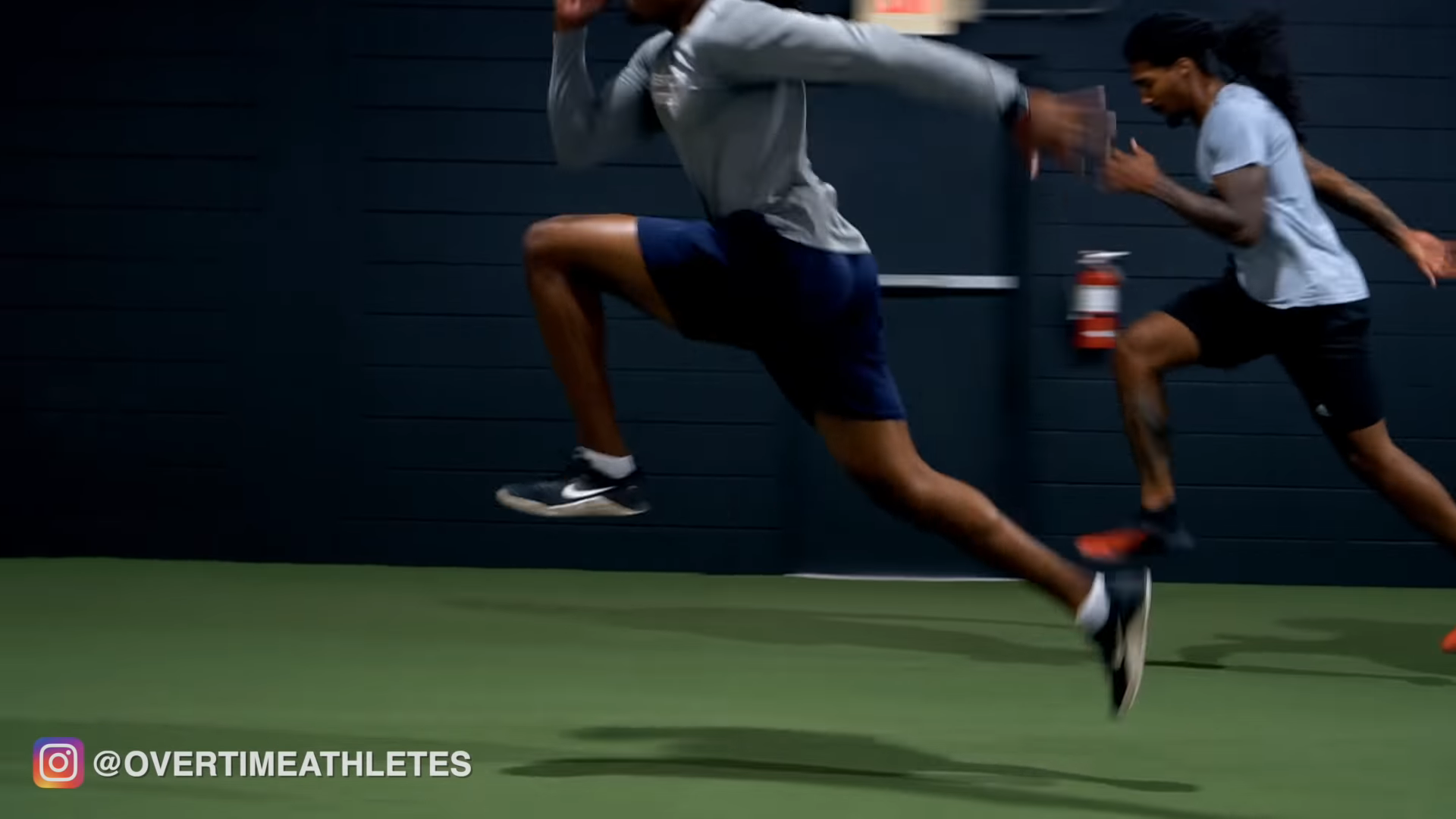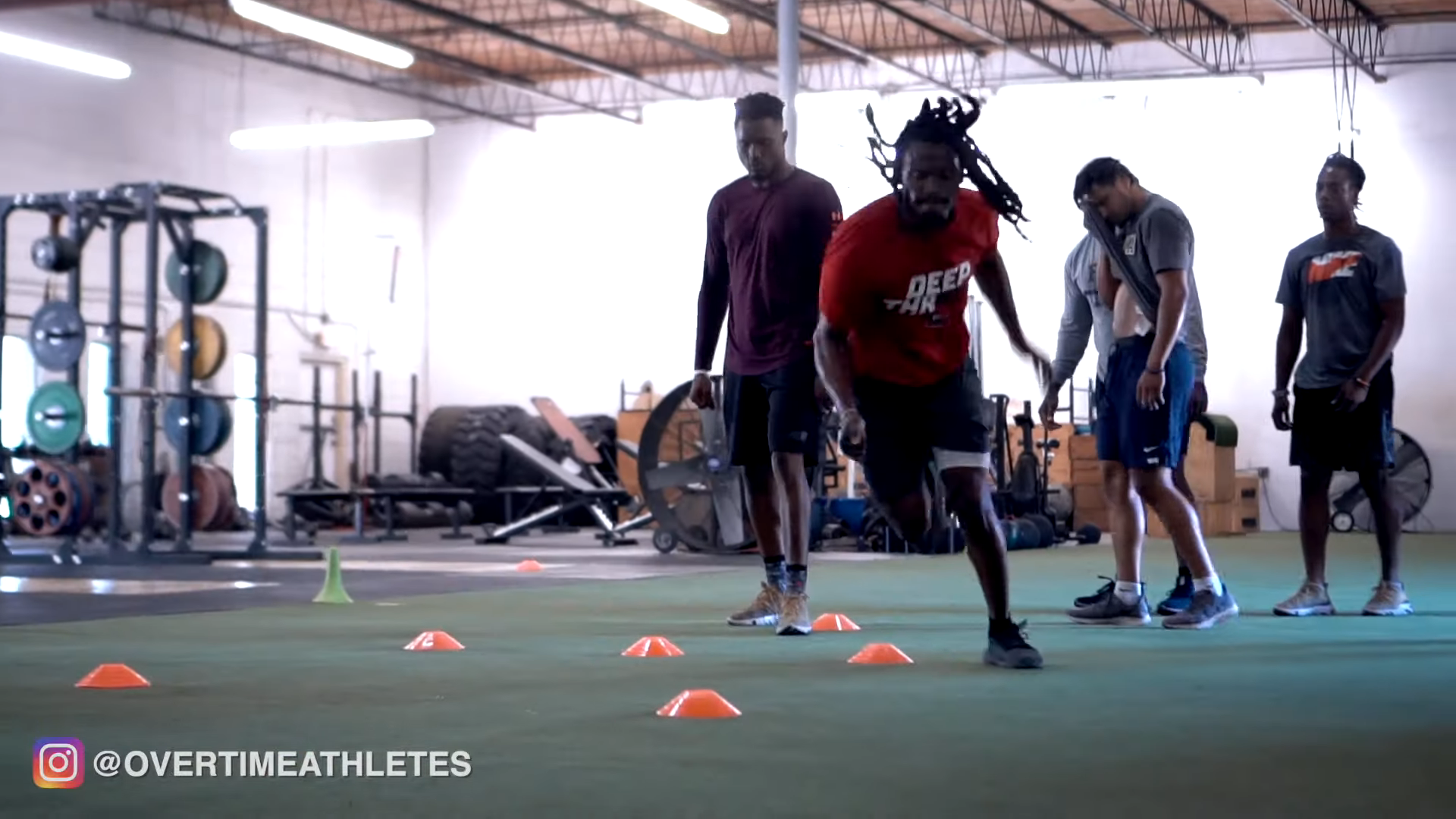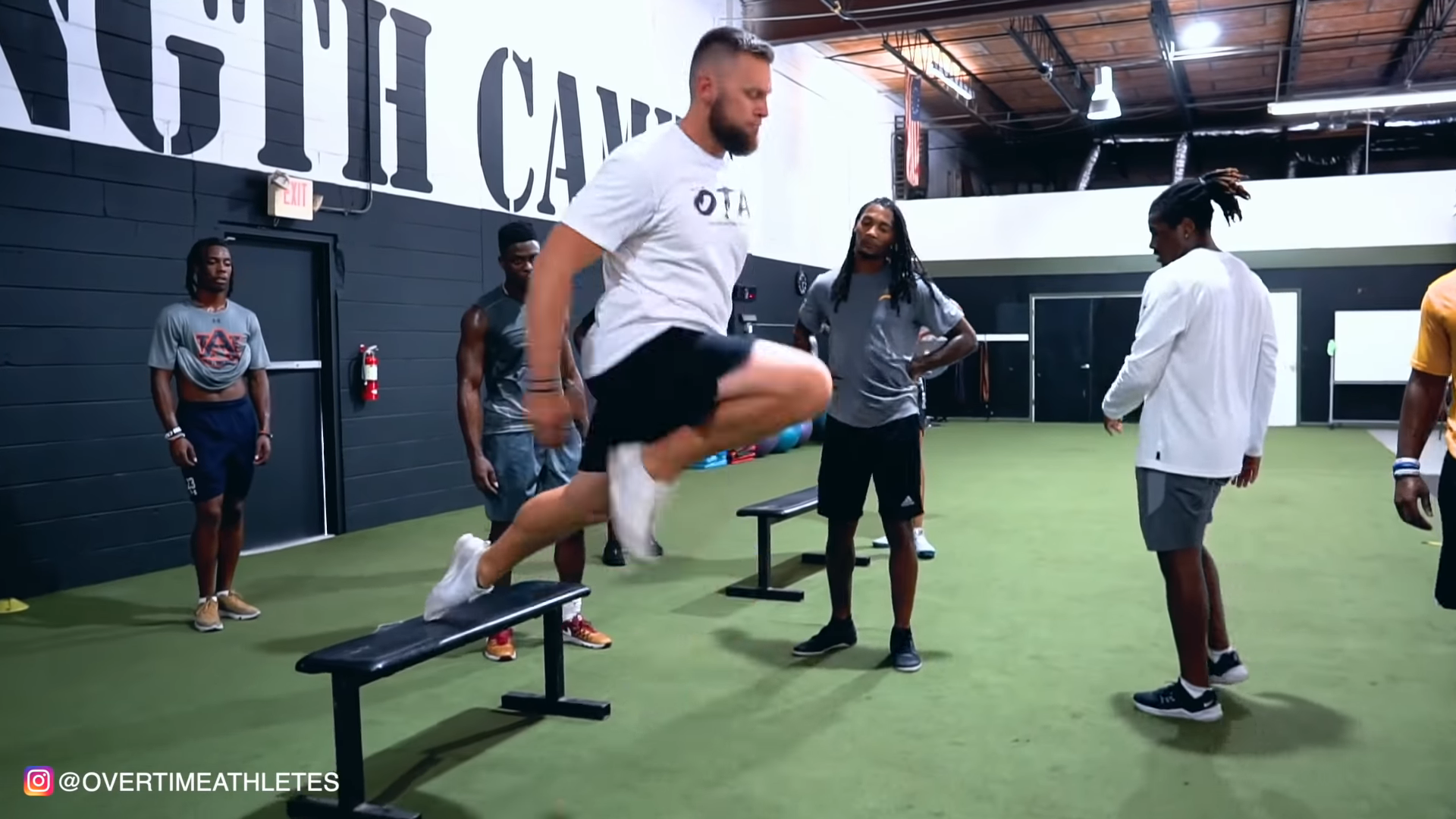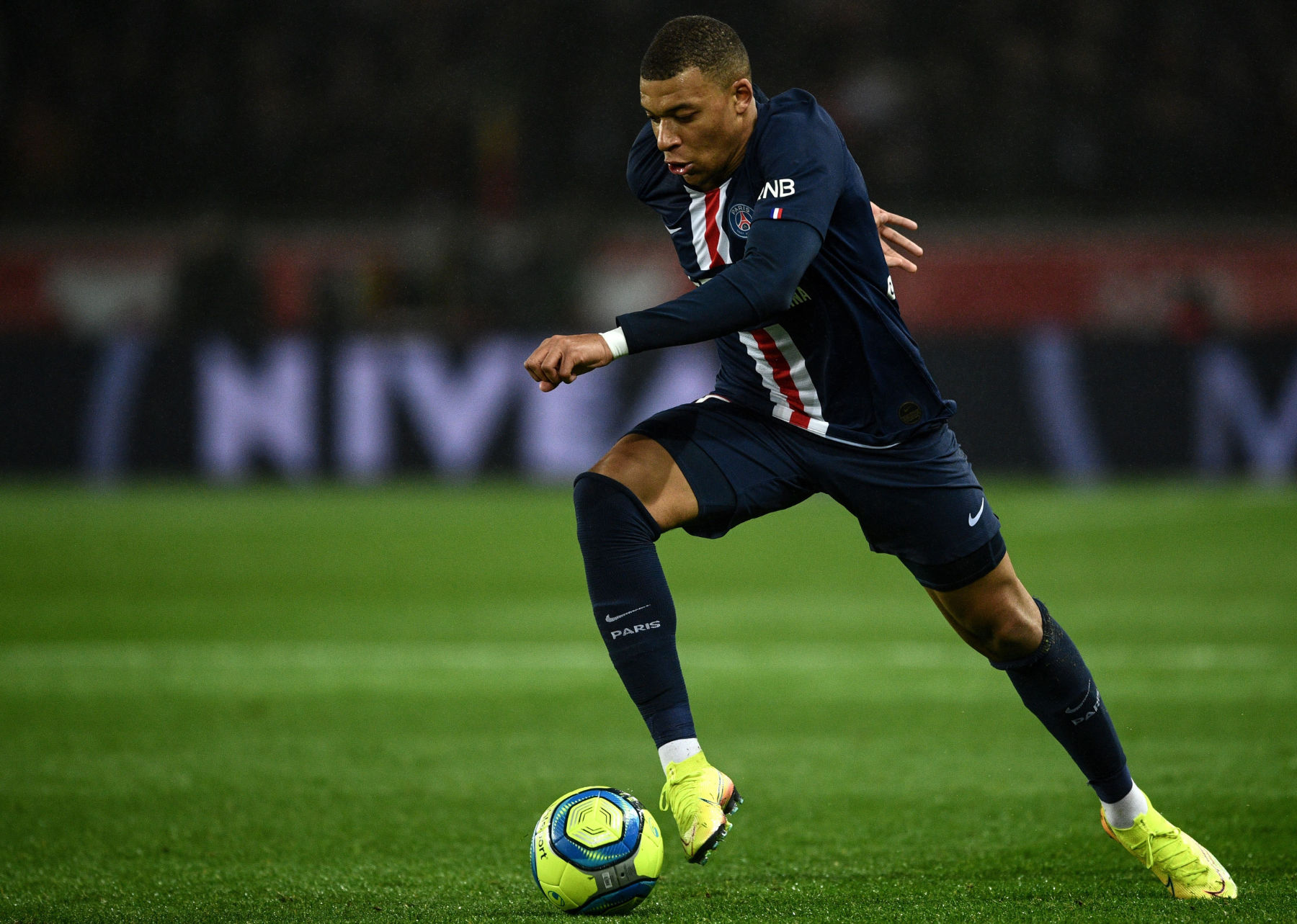Recently, I’ve gotten a ton of questions going something like this – “Chris, I finally made it to this elite soccer academy and training starts soon. I don’t want to embarrass myself out there… do you have any tips for performance and how I should be training?“
Soccer players make up a huge percent of our elite athletes in the world. You can bet, those who dominate on the field, are the ones putting a whole lot of time into into their performance training off the field.
So as for you, the athlete – if you’ve got a pre-season soccer academy coming up, there’s nothing worse than being the guy missing passes and gassing out on a breakaway.
As always, I’ve got you covered.
Start your season off right with these soccer academy training tips for soccer performance.
Need an online soccer academy this year? Look no further than the SOCCER PERFORMANCE SYSTEM
SKILL VS STRENGTH
Before we get into just how you should be approaching performance training as a soccer athlete, let’s talk about the balance between skill and strength.
Soccer players often try to blend these two factors together thinking they’re making the most of their foot skills and speed. However, this will hold you back from becoming highly skilled in both areas.
I see a lot of soccer athletes taking a ball out to the field, getting a few touches in, and calling that agility training...
The truth is, to make waves at soccer academy, you need to be really skilled, really fast, and really strong. And each of those need to be trained on their own.
To develop great touches, spend time with specific soccer training drills out on the field. To develop maximum agility, you need to work on agility drills in the gym. The goal of your soccer training is to isolate and elevate every component of your game.
A number of my soccer athletes came a long way after going through this soccer performance system that gets you ready to dominate in the gym and your game.
Let’s jump into the key elements that make up the performance:
For anyone who’s going the online soccer training route, be sure to check out 5 ways to become a better athlete at home.
SOCCER ACADEMY TRAINING PLAN
1. Linear Speed

Linear speed refers to how fast you can move in a forward direction. This is typically your ALL OUT sprint from a dead stop position, or your first step quickness.
When it comes to linear speed, there are two elements that contribute to making you unmatched on the field: acceleration and top speed.
Acceleration makes up your first few steps, where you’re picking up speed and “accelerating.”
Here’s some great drills to work on acceleration:
Following acceleration, you should hit top speed or your fastest portion of the sprint where the focus is on front-side mechanics.
These are a few of my favorite drills to work on top speed:
Linear speed is such an essential part of soccer since you’re constantly moving around at different rates. The goal is always to make it to the ball first and be there for every pass, so having a fast acceleration and strong top speed is essential for your soccer training.
Before soccer academy, I recommend incorporating a few of these drills at the start of each strength training session to work on quickness.
2. Multi Directional Speed

Like I said before, soccer players will oftentimes consider ball handling or footwork to be agility training.
However, this will only get you so far. If you really want to develop serious multi-directional speed, you need to spend time focusing on building powerful agility.
In terms of soccer, I’ll often refer to this as long and “winding” linear speed. Different than basketball or football – soccer doesn’t require you to make as many quick cuts. Most times as you’re running on the soccer field, it’s never a perfectly angular line, but there’s curves to your movement.
We can break this movement down so that the ankle, hips, and trunk efficiently transfer energy.
A few ways to do this are by enhancing overall lower body strength, so that every step is powerful no matter which direction. Another way I like to work on multi directional speed is by developing lower limb explosiveness.
Here’s a few great agility drills to utilize:
- Pogo Hops
- Cone Hops
- Lateral Shuffle
- Single Leg Tuck Jump
- Broad Jump
3. Plyometrics

Plyometrics are all about building power. For soccer training, vertical, horizontal, and lateral power ALL directly correlate to your maximum sprinting velocity.
This means that no matter which way you typically move on the field, building strength through plyometrics is essential to enhance your game. Most soccer players wouldn’t believe it, but your vertical jump translates to your sprint speed.
That’s because the posterior chain muscles responsible for your jumping are the same as those pushing you through a sprint (glutes, hamstring, foot/ankle complex, etc.).
Plyometric exercises teach your body how to rebound off the ground so that every step and every touch are quick and responsive. These are the 7 BEST Plyometric Drills for Speed.
Similarly, plyometric training for vertical jump plays a role in your ability to decelerate and absorb force. Throughout your training at soccer academy, you’ll come to find this is the same muscular chain used when kicking or passing the ball as well as coming to a quick stop.
The best way to train plyometrics is by starting with simple drills and building a foundation. Once you become skilled here, you can begin to isolate and elevate each exercise such as…
- Skips for Height
- Skips for Distance
- Alternating Bounds
- SL Cycling
Check out these Foundational Plyometrics for Explosive Strength.
4. Strength

Soccer requires a few different kinds of strength:
- Absolute Strength
- Relative Strength
- Supplemental / Integrated Strength
Let’s go into each…
Absolute strength refers to the maximum amount of force you can exert, typically measured by a one rep max. It might be a good idea to know a few of your max lifts before soccer academy so you can watch your growth.
Relative strength is comparative to your size or bodyweight. In other words, it reflects your ability to control your body movement through space, a critical aspect of a strong athlete.
Integrated strength is something I often refer to in core training. This could be the most important type of strength to develop as an athlete since your movement on the field is constantly unpredicted. Having a strong trunk that facilitates full body movement is what allows you to win the ball from other players, make accurate passes and take deadly shots.
It’s important that you work on enhancing each type of strength throughout your soccer training. The soccer performance system lays out the exact programming you need to reach success including:
- How to reach elite level 1 rep maxes
- Enhance full body athletic strength
- Core integration drills
5. Conditioning

The last piece I want to discuss is anaerobic efficiency vs aerobic endurance. This comes down to a soccer player’s level of conditioning. Training for both (anaerobic and aerobic) are essential to work at your max throughout the entire game.
Anaerobic efficiency is your ability to produce force early and late in the game without too much of a drop off in your work. We could base this off of various skills such as shooting or sprinting. Efficiency means you’re able to keep the pressure on all game.
Aerobic endurance is your overall work capacity or the total amount of work you can put in. If you show up to soccer academy and aren’t the fastest guy there, make sure you have the endurance to out-work your opponent until the end of the game.
Based on the athletes I work with, I tend to notice they get enough aerobic endurance work just out of practicing or playing in games. That’s why as a performance coach, I like to address anaerobic efficiency.
To elevate this, it’s important to use a few different modalities within your training:
Finishers
One of my favorite way to get guys working really hard at the end of the game is by tacking on “finishers” to the workout.
The goal is to have you somewhat fatigued first, before performing quick anaerobic bursts of work. This gets you used to a late spike of work in the gym, so you’re prepared when on the field where it counts.
This could be adding in a few sprints or plyometric drills to the end of your workout.
CONCLUSION

Introducing these factors into your soccer academy training, will completely step up your game. If you’re an athlete with really great skill, you need to be spending some time in the weight room to start dominating on the field.
- Linear Speed
- Multi Directional Speed
- Plyometrics
- Strength
- Conditioning
Overtime, watch as this strength training translates to your field…
Play with more speed, shoot with more power, get out with a quicker first step and contest more balls.
If you’re looking to really make waves this season, check out the ONLY online soccer training program you need: Soccer Performance System.
Build your speed, strength and agility just like a few of the professionals I’ve worked with… Martin Olsson, Bruno Oliveira de Matos, and Eric Friedlander